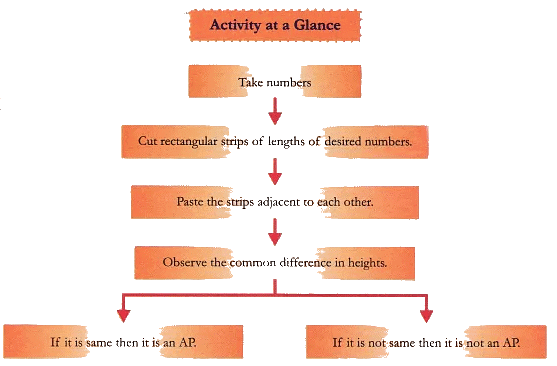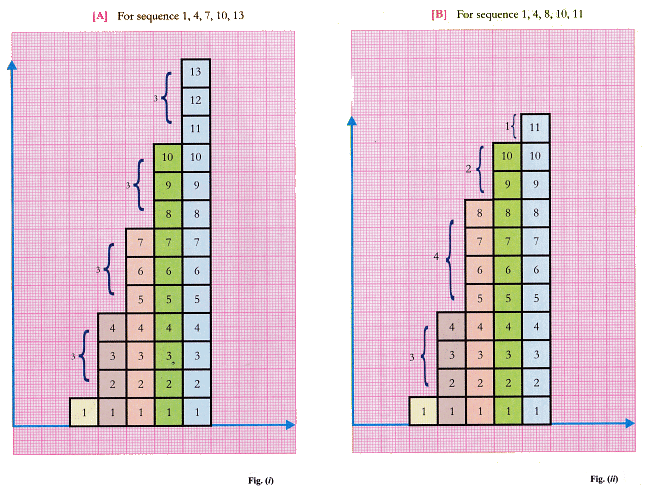Lab Manual: Arithmetic Progression I | Lab Manuals for Class 10 PDF Download
Objective
To verify that the given sequence is an arithmetic progression by paper cutting and pasting method.Arithmetic Progression
A sequence is known as an arithmetic progression (sequence) if the difference between the term and its predecessor always remains constant.
Prerequisite Knowledge
Understanding the concept of an arithmetic progression.
Materials Required
Coloured papers, a pair of scissors, fevicol, geometry box, sketch pens, drawing sheets.
Procedure
- Take a given sequence of numbers say A1, A2, A,…
- Cut a rectangular strip from coloured paper of width 1 cm and length A, cm.
- Repeat the procedure by cutting rectangular strips of same width 1 cm and lengths A,, A3…cm.
- Take a graph paper and paste these rectangular strips adjacent to each other in order on graph paper.
(A) Consider a sequence 1, 4, 7, 10, 13.
- Take different colour strips of lengths 1 cm, 4 cm, 7 cm, 10 cm, 13 cm and all of the same width 1 cm (say).
- Arrange and paste these strips in order on a graph paper as shown in fig. (i).
(B) Consider a sequence 1, 4, 8, 10, 11.
- Take different colour strips of lengths 1 cm, 4 cm, 8 cm, 10 cm, 11 cm and all of the same width 1 cm (say).
- Arrange and paste these strips in order on a graph paper as shown in fig. (ii).

Observation
We observe from fig(i) that the adjoining strips have a common difference in heights i.e. 3 cm and a ladder is formed in which the adjoining steps are constant. Hence it is an arithmetic progression. In fig (ii) the adjoining strips don’t have a common difference in heights and thus the adjoining steps of ladder are not constant. Hence it is not an arithmetic progression.
Learning Outcome
Students will learn the meaning of an arithmetic progression by relating it to an activity that involves visualisation.
Activity Time
Verify experimentally whether the following sequences are AP or not.
(i) 2, 4, 6, 8, 10
(ii) 3, 5, 6, 7, 11
(iii) 1, 5, 9, 13, 17
(iv)4, 7, 9, 10, 12
FAQs on Lab Manual: Arithmetic Progression I - Lab Manuals for Class 10
| 1. What is an arithmetic progression? |  |
| 2. How can I find the nth term of an arithmetic progression? |  |
| 3. What is the sum of an arithmetic progression? |  |
| 4. How can I determine if a given sequence is an arithmetic progression? |  |
| 5. Can an arithmetic progression have negative terms? |  |

|
Explore Courses for Class 10 exam
|

|


















